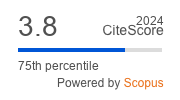Article | Open Access
Coffeehouses (Re)Appropriated: Counterpublics and Cultural Resistance in Tabriz, Iran
| Views: | 3672 | | | Downloads: | 2867 |
Abstract: Over the last decade, traditional coffeehouses have attracted increasing interest in the city of Tabriz, Iran, in the context of consistent state monitoring and restriction of public life—particularly so among non-Persian ethnolinguistic populations. Relying on a combination of ethnographic methods (observations, interviews, and visual documentation), this article explores the everyday life of two coffeehouses in Tabriz through a theoretical lens of third place, counterpublics, and everyday ethics of resistance. Coffeehouses are currently retaining functions as third places; cross-generational venues for preserving cultural, artistic, and linguistic identity as well as institutions of social defiance, resting on elaborate ethical codes and tacit social agreements. Through mechanisms of everyday ethics and cultural practices re-connecting to local history, cultural creativity, and language, insiders are distinguished from outsiders, serving to build trust, security, and solidarity in the context of Iranian state monitoring and restricted social space.
Keywords: coffeehouses; counterpublics; cultural resistance; everyday ethics; Iran; third place
Published:
© Laleh Foroughanfar. This is an open access article distributed under the terms of the Creative Commons Attribution 4.0 license (http://creativecommons.org/licenses/by/4.0), which permits any use, distribution, and reproduction of the work without further permission provided the original author(s) and source are credited.


